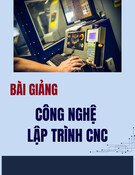
* Corresponding author.
E-mail addresses: mohammadzarei959@yahoo.com (M. Zarei)
© 2017 Growing Science Ltd. All rights reserved.
doi: 10.5267/j.esm.2017.8.002
Engineering Solid Mechanics (2017) 285-292
Contents lists available at GrowingScience
Engineering Solid Mechanics
homepage: www.GrowingScience.com/esm
Experimental determination of the optimum percentage of asphalt mixtures
reinforced with Nano-carbon black and polyester fiber industries
Babak Mirbahaa*, Ali Abdia, Mohammad Zareia, Ali Zareib and Farzad Akbari niaa
aDepartment of Civil Engineering, Imam Khomeini International University, Iran
bMSC, Department of civil engineering, Razi University, Iran
A R T I C L EI N F O A B S T R A C T
Article history:
Received 6 April, 2017
Accepted 31 August 2017
Available online
31 August 2017
The cost of road construction or its repair is among the most concerns for the pavements
engineers. Cracking and degradation is common mode of failure in asphalt pavements that
occurs due to increasing traffic loads or even environmental conditions. For facing with these
damages, some solutions are proposed including correction, quality improvement and
increasing the asphalt resistance. In this research, by adding different percent amounts of black
nano-carbon and polyester fibers as modifier in the asphalt mixtures and conducting several
Marshall tests, it was observed that adding these two additives can improve generally the
Marshall results. Polyester fiber causes preventing crack and damages of asphalt because of
armed effect specification. According to the results, Marshall stability is increased up to 61%.
Furthermore, an economic analysis was performed to investigate the cost of using such
modified asphalt mixtures for constructing 1 km of a six line road and suitable percentages of
additives were found from mechanical-economic analyses.
© 2017 Growin
g
Science Ltd. All ri
g
hts reserved.
Keywords:
Nano carbon-black
Asphalt concrete
Polyester fibers
Marshall stability
Cost analysis
1. Introduction
Strengthening the asphalt mixtures by using the additives has been developed extensively in recent
years. The pavement engineers have applied various additives to bitumen and asphalt mixtures to
improve the mechanical and physical properties of asphalt mixtures. From the other hand, several
failure modes, degradations and damages such as cracking, rutting and etc. can results in overall or
partial failure of roads and pavements (Abuawad et al. 2015; Ameri et al., 2011, 2012; Abdelfattah et
al., 2016; Sabouri et al., 2015; Chandak et al., 2017; Murugan et al., 2016; Park et al., 2015; Wang et
al., 2017; Behbahani et al., 2013; Fazaeli et al., 2016). Annually huge amount of costs are spend for
repair or reconstruction or rehabilitation of roads. For facing with these damages, some solutions are
proposed including correction, quality improvement and increasing the asphalt resistance against

286
environmental or mechanical loads. Among the frequently used reinforcing additives, the fibers can
prevent the damage of the asphalt surface because of their good reinforcing effects.
Zhao et al. (2014) performed a laboratory investigation on Bio-Char modified asphalt mixtures. They
added black carbon as additive to the bitumen by the weight percentage of 5 and 10%. Their results
showed that the addition of black carbon has positive effect on the results of Marshal test. Khalid (2013)
investigated the effect of physical and engineering properties of 60/70 bitumen modified with carbon
black additive. Carbon black was added to the bitumen by approximately 4% of the bitumen’s weight
and it was observed that the softening point is increased for modified bitumen. Park & Lovell (1996)
reinforced the asphalt mixture of pavement by using pyrolyzed black carbon (PCB) obtained from
wasted rubbers and observed that the higher percentage of PCB additive can result in more resistance
of the mixture. Zahedi and Zarei (2016) investigated the effect of black Nano carbon on asphalt
mixtures and concluded that black Nano carbon can change technical specifications of the asphalt and
consequently improves the mechanical specification of the asphalt mixtures. Ameri et al. (2016)
investigate the cracking response and fatigue life of asphalt mixtures modified with carbon nanotube
additives. They showed that adding such modifier can influence significantly on the integrity and
durability of asphalt mixtures. Shafabakhsh et al. (2014) investigated the influence of nano-TiO2 on
the rutting and fatigue behavior of asphalt mixtures. The effect of different fibers on the tensile property
of bitumen was studied by Abtahi et al. (2011). They used ordinary and texturized polyester fibers with
the length of 12mm in their study. However, they found that adding the polyester fibers can reduce
slightly the tensile strength of bitumen. Shukla et al. (2014) performed an experimental study about the
effect of polyester fibers and glass fibers of length 8 mm and 0.2 wt% of bitumen on strengthening the
asphalt mixtures. Their results showed that Marshal Resistance is increased up to 13 percent by adding
the fibers. Similarly in a laboratory work, Guan et al. (2014) studied some kinds of fibers for
strengthening the mechanical properties of asphalt mixtures. They found that adding polyester fibers
with high weight percentage can increases the Marshall Stability of mixture. Zarei and Zahedi (2016)
investigated the simultaneous effect of polyester fiber and black Nano carbon in asphalt mixtures and
observed improvement in the mechanical specifications of the asphalt mixtures. however; the weight,
length and type of fiber had noticeable influence on the mechanical properties of the modified asphalt
mixtures. In another research work Zahedi and Baharvand (2017) showed that adding nano-clay and
crumb rubber can improve the strength properties of the hot mix asphalt concretes. However, in addition
to the strengthening and reinforcing aspects a commercial additive should also be cost effective for
using in practical pavement projects. Therefore, in this research, following a series of Marshal
experiments conducted on mixtures with different additives, related economical and cost analyses are
performed to obtain a better trade off benchmarks for using such modified asphalt concretes in practical
paving projects.
2. Materials and methods
2.1 Materials
The required materials for manufacturing the asphalt mixturs of this research were bitumen,
aggregates and polyester fibers as explained in the following.
In order to study the additives effect on mechanical properties of asphalt mixtures, asphalt samples
were made by 80/100 base bitumen supplied from Kermanshah refinery (in the west of Iran). The
aggregate gradation (as shown in Fig. 1) which is usually used for Topeka layer with sieve size of 0 to
19 mm was also used. As it was mentioned earlier, the size of Nano carbon black is classified into
different types. Technical Properties of Black carbon used in this research is CAS NO.1333-86-4 type
that its specifications have been presented in Table 1. In addition, polyester fibers (with chemical
formula shown in Fig. 2) which has high stability were used for reinforcing the asphalt mixture. The
fibers were supplied from tire Cord Company located in Kermanshah province (west of Iran). Some of
the properties of the polyester fiber are listed in Table 2.

B. Mirbaha et al.
/ Engineering Solid Mechanics 5 (2017)
287
Fig. 1. Gradation of asphalt mixtures usually used for Topeka layers
Table 1. Specifications of used Nano carbon black
Size used (nm) Size(range)
(nm)
Surface area
(m
2
/g)
Density bulk
(g /cm
3
)
Classification
42 15-300 80 0.21 Cas no. 1333-86-4
Table 2. Specifications of polyester fibers used in this work
Melting
point
C)˚(
Tonicity or the breaking
stress
)cN/tex(
Tonicity or the breaking
stress
)gr/denier(
Force in the breaking
point
b.s
denier
)gr(
260-250>
75
7 154
1980
Fig. 2. Chemical formulation of polyester fibers
For manufacturing the asphalt mixture first the aggregates and fibers were mixed and heated inside
on oven then dried aggregates were mixed with nano carbon black modified bitumen at 150°C. The
mixtures were then prepared and compacted according to the standard method of ASTM-D1559 in the
shape of Marshal test specimen and then tested. For investigating the effect of both polyester fiber and
nano-carbon black additives, first, the extreme point of Marshall stability for different percentages of
polyester fibers was obtained. Then the effect of nano-carbon black was studied on the results of
Marshal test. Accordingly, the percent amounts of 0.1, 0.2, 0.3, and 0.4% of polyester fibers with high
stability and also 5, 10, 15 and 20% of black Nano carbon black were chosen for using in the mixture
of asphalt samples.
3. Results and discussion
The experimental results obtained for the tested asphalt mixtures are described in this section.
3.1. Analysis of Marshal Stability results
Fig. 3a,b presents the results of Marshal stability for different modified asphalt mixtures. As seen
from this figure, the combination of both additives (i.e. polyester and nano carbon) has caused to

288
increase the Marshal stability, such that adding 15% of Nano-carbon black and 0.4 % of fibers has led
to a stability equal to 1350 which indicates an increase up to 61% compared to the control sample. Also
adding 15% of nano-carbon black and 0.3% of fibers has led to a stability equal to 1320 which indicates
an increase of 58% stability compared to the base and un-modified sample. It seems that, when the
fibrous materials are placed between aggregates, increase the locking and fastening of aggregates inside
the asphalt concrete materials. The Nano-carbon black can increase the resistance of asphalt mixture
due to the presence of carbon.
(a)
(b)
Fig. 3. The effect of adding nano-carbon black and polyester fibers on the Marshall Stability (a) in
terms of kg and (b) in terms of lb for the investigated asphalt mixtures
3.2. The analysis of Marshal Flow results
Fig. 4, shows the bar chart diagram of flow results for the tested asphalt mixtures. Based on this
figure, by increasing nano-carbon black and polyester contents in the mixtures, the flow of mixture
reduces due to some effects such as chemical reactions or the manner of absorption of nano-carbon
black and polyester fibers with the base binder.
0
100
200
300
400
500
600
700
800
900
1000
1100
1200
1300
1400
1500
0,0
%
0.1,
5%
0.2,
5%
0.3,
5%
0.4,
5%
0.1,
10
%
0.2,
10
%
0.3,
10
%
0.4,
10
%
0.1,
15
%
0.2,
15
%
0.3,
15
%
0.4,
15
%
0.1,
20
%
0.2,
20
%
0.3,
20
%
0.4,
20
%
Series1835 1010 1125 1265 1285 1140 1180 1250 1300 1200 1280 1320 1330 1260 1280 1300 1350
STABILITY,Kg
0
200
400
600
800
1000
1200
1400
1600
1800
2000
2200
2400
2600
2800
3000
0,0
%
0.1,
5%
0.2,
5%
0.3,
5%
0.4,
5%
0.1,
10
%
0.2,
10
%
0.3,
10
%
0.4,
10
%
0.1,
15
%
0.2,
15
%
0.3,
15
%
0.4,
15
%
0.1,
20
%
0.2,
20
%
0.3,
20
%
0.4,
20
%
Series118412226248027892833 2513 2601 2755286626462822291029322778 2822 2866 2976
STABILITY , Ib

B. Mirbaha et al.
/ Engineering Solid Mechanics 5 (2017)
289
Fig. 4. The effect of adding nano-carbon black and polyester fibers on the flow of investigated
asphalt mixtures during marshal test
3.3. Analysis of unit weight results
The variations of unit weight of mixture for different additives have been presented in Fig. 5. As
it is observed from Fig. 5, by increasing the content of nano-carbon black up to 15% in the mixtures,
the weight becomes greater by further adding this additive can reduce the unit weight of asphalt
mixtures. Meanwhile, generally by increasing the fiber percentage the unit weight of mixture becomes
smaller.
Fig. 5. The effect of adding nano-carbon black and polyester fibers on the unit weight of
manufactured asphalt mixtures
3.4. Cost analysis
In order to investigate the economical aspect of using such modifiers in the mixture of asphalt
concretes, a cost analysis also performed. As a case study the mix design proposed in Huang (2004)
was used. The AASHTO method was employed for estimating the structural number SN and thickness
of layers Di in a pavement. The thickness of each asphalt concrete layer can be found from:
(1)
2
2.1
2.2
2.3
2.4
2.5
2.6
2.7
2.8
2.9
3
3.1
3.2
3.3
3.4
3.5
3.6
0,0
%
0.1,
5%
0.2,
5%
0.3,
5%
0.4,
5%
0.1,
10
%
0.2,
10
%
0.3,
10
%
0.4,
10
%
0.1,
15
%
0.2,
15
%
0.3,
15
%
0.4,
15
%
0.1,
20
%
0.2,
20
%
0.3,
20
%
0.4,
20
%
Series12.7 3.5 3.4 3.1 2.6 3.4 3.25 3.2 2.95 3.4 3.3 3 2.8 3.1 3 2.8 2.5
FLOW,mm
2.3
2.32
2.34
2.36
2.38
2.4
2.42
0,0
%
0.1,
5%
0.2,
5%
0.3,
5%
0.4,
5%
0.1,
10
%
0.2,
10
%
0.3,
10
%
0.4,
10
%
0.1,
15
%
0.2,
15
%
0.3,
15
%
0.4,
15
%
0.1,
20
%
0.2,
20
%
0.3,
20
%
0.4,
20
%
Series12.36 2.37 2.38 2.36 2.35 2.39 2.38 2.37 2.35 2.41 2.39 2.38 2.37 2.4 2.39 2.37 2.36
unitweight,gr/cm
3



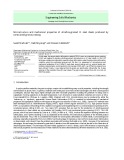
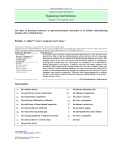
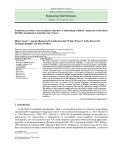

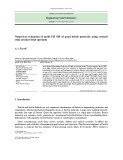
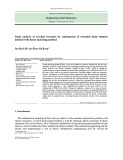
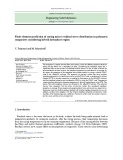
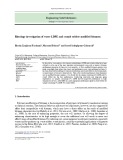



![Bài giảng Ứng dụng tin học trong Kỹ thuật phương tiện thủy [chuẩn nhất]](https://cdn.tailieu.vn/images/document/thumbnail/2025/20251216/anhquangvu03@gmail.com/135x160/12021765937860.jpg)



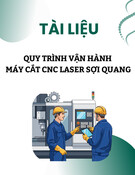

![Bài tập tối ưu trong gia công cắt gọt [kèm lời giải chi tiết]](https://cdn.tailieu.vn/images/document/thumbnail/2025/20251129/dinhd8055/135x160/26351764558606.jpg)




